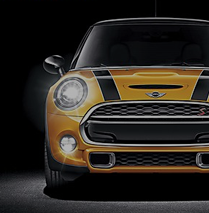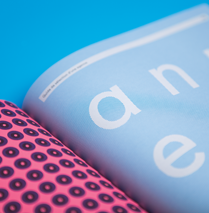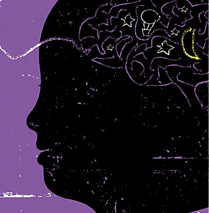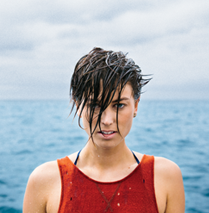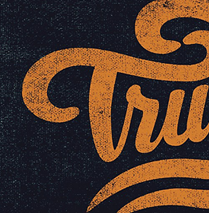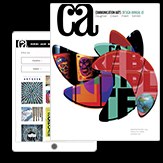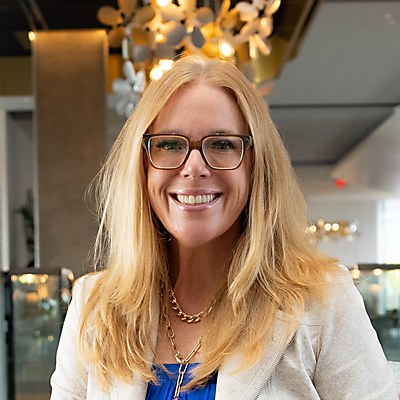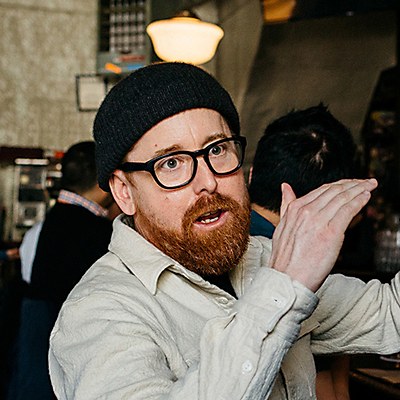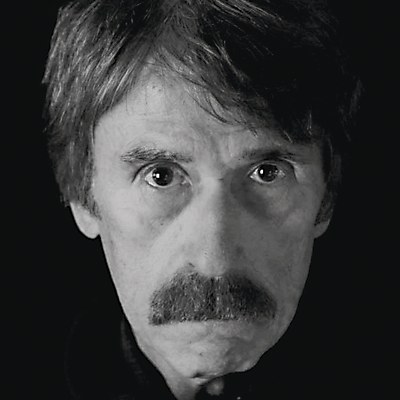How did you get started in photography and develop the skills necessary to enter the field? I grew up near Pittsburgh. While I was growing up, my dad enjoyed taking pictures. There was always a camera around, and I just started shooting. Before long, my dad built a darkroom for us to use. That interest continued through high school, and then I went to East Texas State University and majored in photography. I assisted in Dallas for about a year and then started the process of acquiring and shooting for clients.
Tell us about some of your favorite projects that you’ve worked on in your career. How did they change your perception of what you could accomplish with photography? I’ve been fortunate to have worked with some really great clients and agency teams that have trusted me to collaborate with them. I’ve shot an ad campaign for Ducati on the Amalfi Coast. I’ve shot dog sledding for two different clients, once in Finland 150 miles north of the Arctic Circle, and once in Alaska. I’ve tailhooked onto the world’s largest aircraft carrier and spent the night during war games somewhere in the Atlantic. I’ve worked on four different continents. But it’s not just the locations—it’s also the client, agency and crew that make a project memorable. Most importantly, nothing matters except for the work that gets produced.
Regarding the change of perception: On larger projects where I can really sink my teeth into the challenges and opportunities, the responsibilities become clear. If the entire team does our job well, then the client will be able to (hopefully) do more good, both within their company and beyond. If we don’t, the opposite might happen. It’s important to remember that as a photographer, you aren’t just hired to take a pretty picture but to be a cog in the wheel of the client’s success.
As you have a background in sports photography, what would you say are the additional challenges or considerations you must take in this arena? Since I’m not a photojournalist, everything I shoot is choreographed. I have played and know a lot about a lot of different sports—definitely enough to know to only work with accomplished athletes. They bring so much to a shoot. It’s important to put the athlete in an environment where they’re comfortable and less likely to tire easily. If the shot list has nonathletic scenes to get with the athlete, I always try to do those later. I try to start with the athletic shots so that the athlete begins the shoot in familiar territory. It makes them comfortable right away.
It’s easy to get caught up in the recent technical advances with cameras and lighting. Those advances make it easier with to capture higher frame rates and freeze the action. It’s great to see how photographers use these advancements to come up with photos that were only a dream 20 years ago. The challenge with all genres, but especially sports, is to find ways to be on the leading edge of the creative use of these advancements.
One of your most recent series, Spotlight features silhouettes of athletes in motion with only their hands or faces illuminated. What inspired you to do this series? I’d been playing around with a spotlight attachment to my strobes and trying to come up some images that combine a spotlight with my work in sports and action. Spotlights have been around and used really creatively for a long time. In Spotlight, I’m trying to create a series that uses the spotlight with extreme action. The process is fairly complicated yet kind of simple. A lot of the success rests on the athlete’s ability to be consistent in their actions. Shooting tethered to a computer enables them to see their actions and make adjustments immediately. So far, I’ve been placing the action against a plain seamless background. I’m just getting started with it and plan to play around with all the other possibilities, especially with the environments and the backgrounds. It’s been a fun series to work on, and the response has been pretty favorable. Compositionally, I like being able to force a viewer to look where I want them to look.
You’ve recently established My Hand My Cause (MHMC), a photography-based nonprofit. What is its mission, and what led you to start it? MHMC is simple. We photograph the hands of notable celebrities and offer those images on our website as life-size, museum-quality prints to fans. We’re currently partnering with notable people from the NFL, the NBA, medical research, NASA, extreme sports and Olympic athletes, among others, so that they can each raise funds for causes that they care about. All the net proceeds go to worthy causes. For every 1,340 prints sold, we’ve helped raise $100,000 for the pictured celebrity’s foundation or charity of choice. We’re just a vehicle to help. We launched in mid 2023, and have already helped to raise more than $1 million for worthy causes.
My cofounder Everett Wilder has been a great partner in this initiative and very instrumental in the progress that we’ve made. Willoughby Design in Kansas City and its team headed up by Megan Stephens have not only created a stunning website and all of our brand identity, but the design firm has been supportive in every way imaginable, including partnering with the programming team at Imagemakers headed by Dan Holmgren to launch our stunning website. Phase One cameras is also one of our sponsors. Every hand image I shoot is taken with one of the highest-resolution cameras in the world. We plan to have gallery events where these images are five feet tall. All of our sponsors have been behind this and supported it by donating their time and resources.
Our celebrity partners have embraced the concept, and this has taken considerable effort by a lot of people to get to where we are today. As expected, we’ve had plenty of failures and setbacks, and what we’ve learned from them have been instrumental in achieving our goals. We and our partners are committed to helping as many worthy causes as we can, and we realize we have a lot of work to do to get this to realize its full potential. We’re hoping to be working soon with some of the largest sports leagues and also one of the world’s largest music companies to be photographing their musicians.
During the pandemic, a lot of people in our industry were coming up with ways to help or to give back, and so was I. Several years prior, I’d photographed the paws and claws of animals as a promo piece. That idea evolved into MHMC. We plan to add the paws of at-risk and endangered animals to help raise funds for their habitats and conservation.
Among other accomplishments, you’ve been named one of Lürzer’s Archive’s “200 Best Photographers Worldwide” and appeared in our Photo Annuals seventeen times. What have these experiences been like for you? I’m not patronizing when I say that Communication Arts and the Photo Annuals have been the single largest outside source of influence on both myself and how I’m perceived by my clients. Inclusion in the Annual has always been affirmation to me that I’m creating images worthy of making this my career. And when clients see my work in the Photo Annual, it gets their attention and elevates my perceived abilities.
What is the weirdest thing that you’ve experienced on a shoot, and how did you handle it? On a shoot for The Four Seasons Hotels, the creative director and I were shooting landscapes in some marshes at the Aransas National Wildlife Refuge on Texas’s Gulf Coast. We heard a weird noise, went to investigate and got chased by a mama alligator. It was about 50 yards to the car. We ran like hell and jumped onto the hood and roof. She was right behind us. We waited a while and then went back to get the camera, tripod and all the gear.
What do you think of the photography industry right now, and where do you see it headed? It’s a tough industry right now. The battle between the client’s need, or request, for quantity versus quality is about as polar opposite as ever. Quantity over quality probably isn’t sustainable for the client, agency, photographer or any supplier. All it takes is for one client to put concept and execution as their priority. If they have success with it, their competition will take notice, and change will begin to happen.
I’ve worked with some incredibly smart, creative and passionate clients, account people, and agency creatives. A lot of where the advertising photo industry is headed is in their hands. Too much power is given to research and the teams of people using data to drive decisions. Not saying data isn’t important, but these talented, smart agency and client people have spent years developing a gut feel for making the right decision. I believe our industry needs less data and more gut.
Do you have any advice for photographers just entering the profession? You’re going to have the opportunity to do something truly wonderful, inspirational and great. Corporations and the people that work there are going to be counting on you to help in the marketing of their product or service. If you don’t exceed expectations, they suffer. You’ll experience the extreme joy of success and the absolute heartbreak of failure. Current cameras and equipment are so advanced that you may feel you don’t need to learn and respect the technical aspects of photography and lighting. To not learn that would be your loss. Too many photographers echo what other photographers shoot. Don’t be that person; create something new. If you’re not passionate about photography and 100 percent committed, it might not be the best field for you. And be ready to pivot. Change is everywhere. ca


